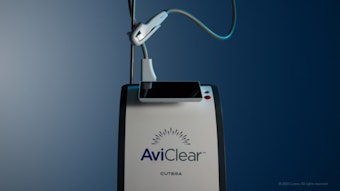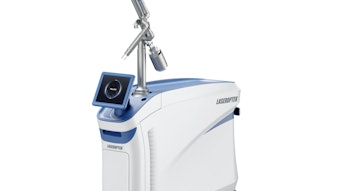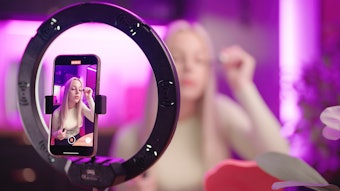
While acne is the No. 1 skin concern in America, pigmentation is the No. 1 skin disorder globally and for patients with Fitzpatrick Skin Types IV and higher. In recent years, aesthetic practices have been seeing an increase in the number of patients struggling with unwanted pigmentation as awareness of effective treatments grows. “We are seeing an increase in patients coming to our offices with different skin pigmentation disorders. Some of the more common ones are post-inflammatory hyperpigmentation (PIH) from acne or skin trauma, melasma, solar lentigos and other types of photodamage-related pigment changes,” says Wendy Roberts, MD, a dermatologist in private practice in Rancho Mirage, California.
Removing the Mask of Melasma
Melasma is one of the most challenging pigmentation concerns to treat. It has a high rate of recurrence and aggressive in-office treatments carry a high risk PIH in patients with skin of color. Effective management often requires a combination of prescription topicals, strict sun protection and avoidance, and less aggressive in-office procedures.
“You have to be clear with the patient that melasma is chronic. There is no cure. We can manage it, but it will come back if we are not vigilant,” says Dr. Roberts.
The initial consultation is crucial in formulating a treatment plan. Physicians should take a family history, discuss pre-existing health conditions and medication use, and ask about the patient’s lifestyle.
“If someone tells me that all the women in their family have melasma, I know that I’m dealing with a genetic propensity, not just lifestyle. And that tells me I’m going to have to go with the big guns,” says Dr. Roberts. “Similarly, if a patient plays tennis every day from 1pm to 3pm or lives in the Sun Belt, they are going to be more difficult to clear.”
There are several medications that may cause or exacerbate hyperpigmentation. They include NSAIDs, such as ibuprofen, blood pressure medications, and birth control pills and hormones for menopausal symptoms. “Anything in the hormone family can cause hyperpigmentation,” says Dr. Roberts.
First-Line Treatments
Topical bleaching agents and sun protection are the first-line treatments for melasma. “I begin with a topical bleaching agent—hydroquinone 4 percent—as well as sun protection,” says Andrew F. Alexis, MD, Mount Sinai West Skin of Color Center in New York. “After a two month trial of topicals only, I then consider in-office procedures in the form of superficial chemical peels or very conservative use of nonablative fractional lasers—my preferred device is the 1,927nm low-powered diode Clear + Brilliant Permea laser.”
Both Dr. Roberts and Dr. Alexis recommend Tri-Luma (Galderma), a prescription topical that combines 4 percent hydroquinone with tretinoin and corticosteroid fluocinolone acetonide. “I like hydroquinone. Nothing yet is proven to surpass it,” says Dr. Roberts. “And the retinoids are great. There are University of Michigan studies going back to the 1990s showing that topical tretinoin by itself lightens skin. When you combine it with hydroquinone and corticosteroids, you get the synergy of all three actives working together.”
Long-term use of hydroquinone is associated with the risk of exogenous ochronosis, so you do need to monitor the duration of therapy. “I typically use 4 percent as my standard, and patients can use it comfortably on a consecutive basis for six consecutive months, if warranted, followed by a six-month hiatus,” says Dr. Alexis. “After six months of use. I transition the patient to non-HQ therapy, such as Lytera 2.0 (Skinmedica), azelaic acid, kojic acid or topical retinoids.”
Dr. Roberts limits hydroquinone use to eight consecutive weeks before rotating the patient to a nonprescription lightener. She notes that many young patients are wary of using hydroquinone and may opt to start with nonhydroquinone skin lighteners. “A lot of our younger patients will say, ‘I don’t want anything with hydroquinone in it,’ so you want to be prepared with alternatives,” she says.
She recommends Cysteamine Cream from Scientis Pharma and Colorescience’s Even Up. “Even Up is a nice product because it camouflages while you’re treating and it has a number of nonhydroquinone actives, including licorice, and also mineral pigments that cover the brown spots and provide sun protection,” she says. “You always want to think about both treating and covering. Because that coverage offers camouflage and added protection.”
In addition to nonprescription skin lighteners, Dr. Roberts starts all of her melasma patients on both topical and oral antioxidants. “Antioxidants are very important in melasma to fight the sun damage. The internal antioxidant I like is polypodium leucotomos (Heliocare)—and this is particularly important for people who live in the Sun Belt because they are constantly exposed to UV rays,” she says.
For topical protection, she recommends vitamin C and E products, such as Skinceuticals’ C E Ferulic. “That’s the one I use the most. Then you need sun block. I like to use a tinted sun block for my melasma patients because these formulations include both chemical and mineral sun blocks, so they are broad-spectrum, and the tint provides some camouflage,” says Dr. Roberts. “Then you have your makeup. I encourage melasma and PIH patients to wear foundation, because it creates another layer of protection for their skin.”
In addition to sun block, antioxidants and lighteners, melasma patients need to be counseled on sun avoidance, as exposure to UV rays can cause recurrence. “Patients need to think about personal shade structures—hats, long sleeves and umbrellas,” says Dr. Roberts. “Their car windows should also be tinted. You want to do everything you can to decrease sun exposure to the face. If we’re not addressing UV exposure, none of the treatments will work.”
In-Office Procedures
For some patients, topicals and sun avoidance do not offer satisfactory outcomes. In these cases, in-office procedures, such a chemical peels, microdermabrasion and laser treatments can help banish unwanted pigment.
Dr. Alexis begins with low-concentration glycolic acid peels. “I start at 30 percent, working up slowly to as high as 70 percent. For skin of color, modified Jessner peels and salicylic acid peels are my go-to treatments,” he says.
“Patients with superficial cases of melasma are great candidates for chemical peels,” says Dr. Roberts. “With melasma, you have the epidermal variant, the dermal variant and the mixed. Peels are very effective for the epidermal.”
She uses the modified Jessner peel, noting that any peel that has lactic acid and resorcinol is a good choice for melasma. “There are many commercial peels out there that have those ingredients. I love the Vitalize peel by SkinMedica,” she says.
Nonablative fractional lasers are also an option for melasma patients, but must be used carefully to prevent PIH, particularly in patients with darker skin types. “The low-powered diode 1,927nm Clear+Brilliant Permea is a lot safer for darker skin types than the traditional 1,927nm thulium laser,” says Dr. Alexis. “It has very simplified settings—low, medium and high—and I tend to stick to low or medium. This offers a good mix of efficacy and safety in terms of minimizing risk.”
Dr. Roberts has two lasers that she uses for melasma: the Fraxel 1,550nm and the Aerolase Lightpod Neo 1,064nm 650 nanosecond laser. “This is my newest device, and I’m getting really nice results. It’s very short-pulsed and is a great laser for melasma,” she says.
While the 1,550nm Fraxel is indicated for all skin types, Dr. Roberts notes that it can cause PIH in skin types IV and higher. “It’s very technique- and user-dependent. You have to use very low energy and density settings and do more sessions,” she says.
When adding chemical peels or laser treatments to your melasma treatment regimen, topical retinoids should be stopped at least a week prior to the in-office treatment to reduce the risk of excessive injury to the skin. “I stop the topical retinoid seven days before any chemical peel or laser treatment to reduce the risk of crusting and erosions and excessive injury to the dermis. I have them resume their retinoids 24 hours later,” says Dr. Alexis.
Brightening Sun-Damaged Skin
When addressing unwanted pigmentation resulting from sun damage, topical lightening agents, such as retinoids, sun protection and avoidance, and in-office procedures are also utilized. But there are some differences when working with patients with skin of color. “Up to skin type IV, I use a 532nm KTP laser for photoaging-related pigmentation changes, including solar lentigines,” says Dr. Alexis. “For higher Fitzpatrick types, I prefer a nonablative fractional laser, particularly the 1,927nm low-powered diode laser.”
Over the years, as patients have seen positive results on their facial skin, they are becoming increasingly concerned with unwanted pigmentation on their hands, arms and chests. “For photodamage, I use a lot of Fraxel laser and a lot of peels, both in isolation and in combination, for the face, arms, hands and chest,” says Dr. Roberts. “The Aerolase Lightpod Neo is also working well for pigment on the chest. The choice typically depends on budget. If the patients doesn’t have the budget for a laser treatment, then we go with peels.”
Addressing Acne-Related PIH
Acne, in and of itself, is an upsetting skin concern that can leave long-term physicial reminders in the form of scars and hyperigmented areas of skin. In skin of color, this excess pigmentation can linger long after the blemishes have cleared.
“For acne-associated PIH, my goal is to treat both the acne and the pigmentation at the same time, so with that in mind, I rely more on topical retinoids and azelaic acid as opposed to hydroquinone,” says Dr. Alexis. “But with acne, there is also a scarring component. In order to treat both the pigmentation and the textural concerns, I also use the 1,550nm fractional nonablative laser or salicylic acid peels.”
Lichen Planus Pigmentosus
A less common pigmentation concern that is more likely to occur in patients with skin of color is lichen planus pigmentosus. “This is a very difficult-to-treat condition that thankfully is not extremely common, but it’s not rare,” says Dr. Alexis. “It is particularly seen in individuals with either South Asian and Latin American ancestry.”
An inflammatory condition, lichen planus pigmentosus presents with bluish-gray areas of pigmentation involving the face, the neck and, in other cases, the trunk or extremities. Treatment involves first addressing the abnormal inflammation with topical and oral anti-inflammatories. “Then we treat the residual pigmentation with bleaching agents, lasers, peels and sun protection,” says Dr. Alexis.
He prescribes immunomodulatory oral agents, such as hydroxychloroquine. “Oral retinoids, such as oral tretinoin, also can be useful as well as oral doxycycline for its anti-inflammatory effect at an antimicrobial dose,” he says.
Dr. Alexis waits until the inflammation is under control before addressing the existing pigment. “This is a slow-burning inflammatory condition. I want to ensure that the inflammation is completely resolved and the patient is in remission before introducing devices and procedures,” he says. “That course of medical treatment, before introducing cosmetic treatments, is longer than with other pigmentation concerns. It may be in the range of four to six months. The topical bleaching agent, however, can be started much earlier in the course—even right away—as long as anti-inflammatory, immuno-modulating therapy is on board at the same time.”
Like melasma, lichen planus pigmentosus can recur and, therefore, requires long-term maintenance. “For long-term control, I typically use a topical calcineurin inhibitor, such as tacrolimus ointment or tacrolimus cream. This helps regulate the abnormal inflammation,” says Dr. Alexis.
Pigmentation problems are one of the top concerns for patients with skin of color. They are notoriously difficult to treat, due to a high rate of recurrence and a high-risk of treatment-related PIH. But new products and techniques are constantly emerging. “The treatment of pigmentation concerns is a fast-growing field, so keep up with it,” says Dr. Roberts. “Just when you think you know all the treatments, there is a new one that can provide better outcomes for our patients.”
Inga Hansen is the excutive editor of MedEsthetics.
Image copyright Getty Images











